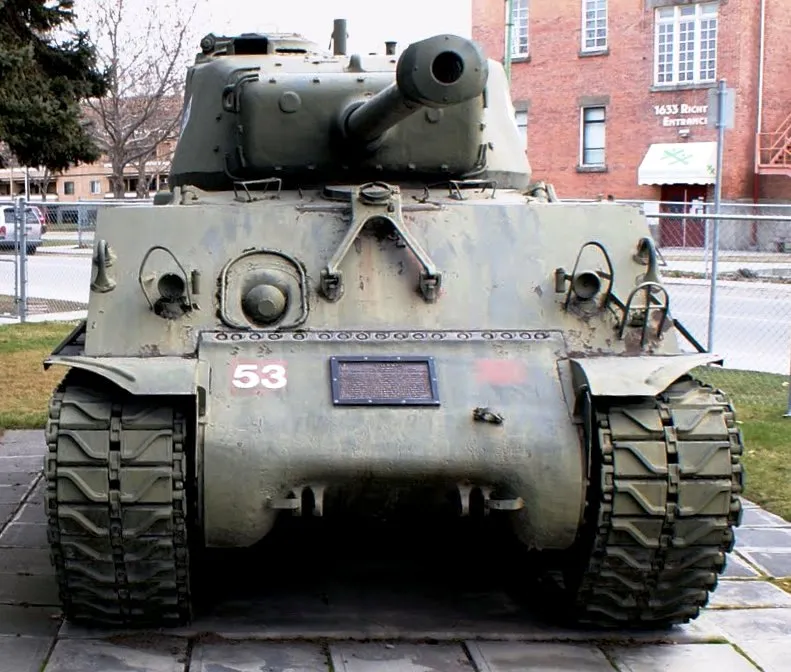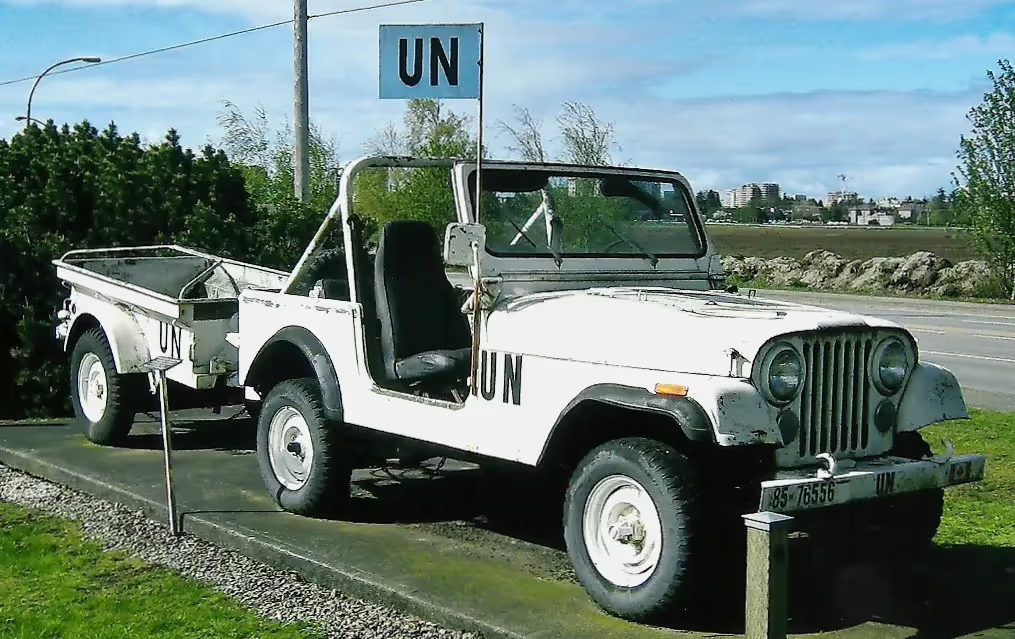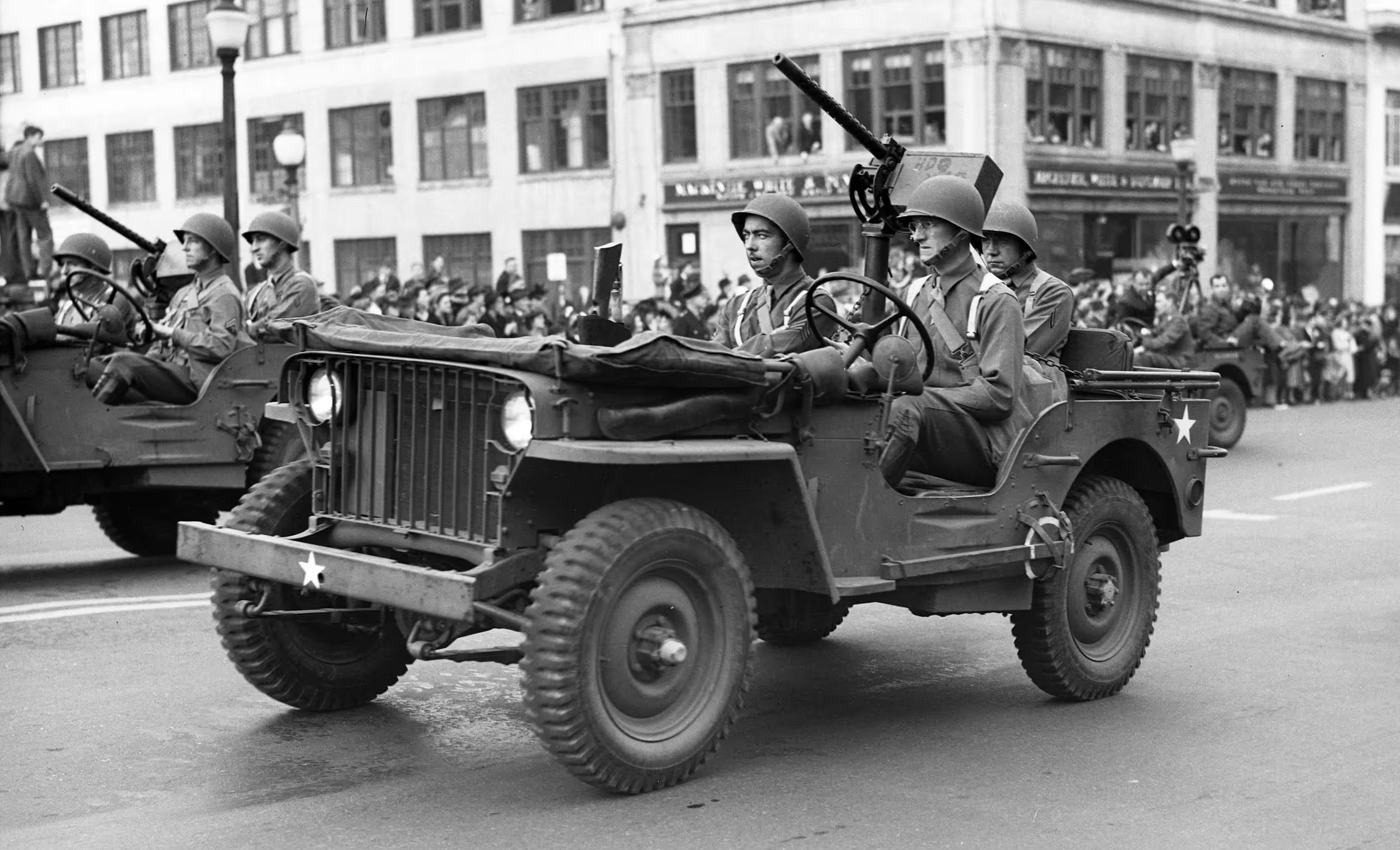Armour in Canada (1) British Columbia
Tanks and Armoured Fighting Vehicles in British Columbia
The data and photos found on this page has been compiled by the author, unless otherwise credited. Any additions, corrections or amendments to the lists of Armoured Fighting Vehicles in Canada found on these pages would be most welcome and may be e-mailed to the author at [email protected].
Aldergrove



(Author Photos)
Centurion Main Battle Tank Mk. 5, 20-pounder main gun, 31A, built in 1952. This Centurion was previously on display at the Cornwallis Military Museum, Nova Scotia. It is now with the Western Museum of the Armed Forces in Aldergrove.
Other kit in this collection:
Centurion Main Battle Tank (Australia).
Alvis FV601 Saladin six-wheeled armoured car (British)
American 90-mm M1A1 Anti-Aircraft Gun, ex 43rd MAA.
Two 40-mm Bofors Light Anti-Aircraft Guns, ex 65th LAA.
6-pounder 7-cwt QF Anti-Tank Gun (57-mm).
155-mm M109A3 SP Howitzer.
Chilliwack

M4A2(76)W HVSS Sherman "Easy 8" tank (Serial No. 69301), built by Fisher, Reg. No. 30129780, “Caroline”. This tank is still in running order. It belongs to the 39th Combat Engineers Regiment and is currently on display at the Armoury (Old Area Support Unit facility) on Keith Wilson Road. (Royal Canadian Legion, Chilliwack Photo)
In 1946 the first of 294 M4A2 (armed with a 76-mm main gun) Wet Horizontal Volute Spring Suspension (HVSS) Sherman tanks arrived at Camp Borden, Ontario, and at the Long Pointe Ordnance Depot in Montreal, Quebec. The Canadians referred to this tank as the M4A2E8. 96 Stuart tanks were also delivered at the same time. The new Shermans were manufactured by the Fisher Tank Arsenal in Grand Blanc, Michigan between May 1944 and May 1945. M24 Chaffee light tanks were also purchased at this time. Compared with the Shermans used by Canadians in the Second World War, the ammunition storage in the new tanks was improved by surrounding the racks with water and etheylene glycol-filled jackets to reduce the probability of explosion in the event of penetration of the armour by enemy fire. The tanks equipped with this protection system were designated "Wet". The M4A2E8 was powered by a pair of side-by-side mounted General Motors 6046 diesel engines producing 375 hp mounted in the rear of the hull. The tank could sustain a speed of 48 kmh (30 mph). Its main armament was a 76-mm M1A2 long-barreled, high-velocity gun fitted with a muzzle brake. Its secondary armament included one Browning .30-calibre M1919A4 machine-gun mounted co-axially with the main gun, a bow machine-gun in the front of the hull, and a Browning .50-calibre machine-gun mounted on a post between the loader's and commander's hatches for AA protection. The HVSS system used four wheels per bogie instead of two, which allowed tracks that were wider (165-mm) to be installed, and which made for better performance on soft ground and allowed for a smoother ride. The M4A2E8 had a five-man crew. The driver and co-driver sat in the front of the hull with the driver on the left and co-driver on the right. The crew commander, loader and gunner sat in the turret. The crew commander's position was on the right side of the turret, the loader sat on his left and the gunner sat in front of the commander. After the first batch of the new tanks went to the Royal Canadian Dragoons (RCD) at Camp Borden in 1946, another 30 went to the Lord Strathcona's Horse (LdSH at Camp Wainwright, Alberta in March 1947. Training on the tanks by the LdSH was also conducted at Camp Sarcee in Alberta, and at Camp Petawawa, Ontario, when the RCD moved there in the spring of 1948.
M113A1 Tube launched optically tracked wire guided anti-tank missile (TOW) Under Armour (TUA), on display at the Armoury (Old Area Support Unit facility) on Keith Wilson Road.
M113A1 Engineer Vehicle, on display at the Armoury (Old Area Support Unit facility) on Keith Wilson Road.
Chilliwack, Canadian Military Education Centre.
The CMEC is a Non Profit Museum Society. It is a member of the Organization of Military Museums and a recognized Military Museum by the DND. It is operated by a group of dedicated volunteers and the museum functions by public donations and the support of the City of Chilliwack.


(CMEC Photo)
M3 Halftrack, CZ4284628. 43,000 halftracks were produced by three primary manufacturers in the USA; the largest being the White Motor Company, the original designer, with a total of 15,414 accepted by the US War Department. The other manufacturers, Autocar and Diamond T, built 12,168 and 12,421, respectively. These designs were produced under license in Canada, and were widely supplied under the Lend Lease program, with 5,000 supplied to the USSR alone.

(CMEC Photo)
Lynx Scout Car Mk II.

(CMEC Photo)
Universal Carrier Mk I with 2-pounder Anti-Tank Gun.
Fruitvale

Universal Carrier, Canadian patrol, possibly Normandy, France, 1944. (Library and Archives Canada Photo, MIKAN No. 4233296)
Universal Carrier, Memorial, off Nancy Green Lake-Rossland Mead (3B), Fruitvale, BC.
Kamloops
Universal Carrier, Recce 41, No. 3, Rocky Mountain Rangers Museum.
M113A1 Armoured Personnel Carrier, in front of the J.R. Vicars Armoury.

(Google Earth Photo)
M113 C & R Lynx (Serial No. unknown), in front of the J.R. Vicars Armoury.
M37 3/4-ton truck with M43 ambulance body on the left, normal M37 3/4-ton truck on the right.
Information on the correct CFR number for this vehicle would be most welcome. The hull number on the Lynx is on the upper right corner of the glacis plate (vehicle's right) in a rectangle deliberately left bare of grip tread paint, also on the rear door about 3" above the handle pivot and on the observer's hatch between the 2 hinge arm brackets.
Kelowna

(Swerver Photo)

(Al Dadds Photo)
M4A2(76)W HVSS Sherman "Easy 8" tank (Serial No. 69132), built by Fisher, Reg. No. 30129611, No. 53, Brigadier Angle Armoury, 720 Lawrence Ave.



(Doug G Photos)

(Al Dadds Photo)
M113 C & R Lynx (Serial No. unknown), 29E, "Beaverdell", Brigadier Angle Armoury, 720 Lawrence Ave.
M113 C & R Lynx (Serial No. unknown). Information on the correct CFR number for this vehicle would be most welcome. The hull number on the Lynx is on the upper right corner of the glacis plate (vehicle's right) in a rectangle deliberately left bare of grip tread paint, also on the rear door about 3" above the handle pivot and on the observer's hatch between the 2 hinge arm brackets.
Nanaimo

(Al Dadds Photo)
M113A2 APC with external fuel cells, Brigadier Sargent Armoury.

(Al Dadds Photo)
M577 CP, Brigadier Sargent Armoury.

(Al Dadds Photo)
AVGP Grizzly, Brigadier Sargent Armoury.
105-mm C1 Howitzer, Brigadier Sargent Armoury.
New Westminster Armoury



(Al Dadds Photos)



(Author Photos, 25 Jan 2019)
Universal Carrier.
North Vancouver

(John Eckersley Photo)
M113A2 EVSEV with external fuel cells, in front of the LCol J.P. Fell Armoury (home of the 6th Fd Sqn), 1513 Forbes Ave.
Richmond

(John Eckersley Photo)
CJ-7 2¼ -ton 4 X 4 Jeep with ¼-ton trailer, painted in white with UN markings. 12 (Vancouver) Service Battalion Armoury.

(John Eckersley Photo)
IHC M62 5 Ton 6X6 Wrecker, 12 (Vancouver) Service Battalion Armoury.

(John Eckersley Photo)
GMC M135 CDN – 2½ Ton 6 X 6 Truck, 12 (Vancouver) Service Battalion Armoury.
Sidney



(Author Photos, 28 Jan 2019)
M4A2(76)W HVSS Sherman "Easy 8" tank (Serial No. 69087), built by Fisher, Reg. No. 30129566, “Cheetah”, Army, Navy & Air Force (ANAF) Hall, Unit No. 302, 9831 4th St.
Vancouver

Ram II tanks on maneuvers, ca 1942. (Library and Archives Canada Photo, MIKAN No. 4232743)

Ram II Tanks, Camp Borden, Ontario, ca 1943. (Library and Archives Canada Photo, MIKAN No. 4232618)

Ram II tanks in service with the 27th Armoured Regiment (the Sherbrooke Fusiliers Regiment) of the 2nd Armoured Brigade and the North Nova Scotia Highlanders of the 9th Infantry Brigade on manoeuvres, conditioning for Second Front Operations. (Library and Archives Canada Photo, MIKAN No.3255723)





(Author Photos, 28 Jan 2019)
Ram II Cruiser Tank, (Shop No. 154), A13, (Serial No. WD CT39934), Beatty Street Drill Hall, 620 Beatty St.

Canadian M4A3(76)W HVSS Sherman "Easy 8" tanks in Korea, ca 1952. (Library and Archives Canada Photo, MIKAN No. 4235604)

Canadian M4A3(76)W HVSS Sherman "Easy 8" tank C Squadron, LdSH (RC), Korea, 16 July 1952. (Library and Archives Canada Photo, PA115496, Paul E. Tomelin)





(Author Photos, 28 Jan 2019)
M4A2(76)W HVSS Sherman "Easy 8" tank (Serial No. 69192), built by Fisher, Reg. No. 30129671, No. 53, “Boss”, Beatty Street Drill Hall, 620 Beatty Street.
Vancouver, Seaforth Armoury, 1650 Burrard Street.


(Al Dadds Photos)
LAV III Monument, one of 250 allocated to communities across Canada.
Vernon


(Al Dadds Photos)
AVGP Cougar (Serial No. 37435), Vernon Army Cadet Camp.

(Al Dadds Photo)
M113 C & R Lynx (Serial No. unknown), No. 1 of 2, cam, Vernon Army Cadet Camp.

(Al Dadds Photo)


(Doug G Photos)
M113 C & R Lynx (Serial No. unknown), No. 1 of 2, UN markings, Vernon Army Cadet Camp, Armoury Park, 2901 18th Ave.
Information on the correct CFR number for this vehicle would be most welcome. The hull number on the Lynx is on the upper right corner of the glacis plate (vehicle's right) in a rectangle deliberately left bare of grip tread paint, also on the rear door about 3" above the handle pivot and on the observer's hatch between the 2 hinge arm brackets.
Victoria

(Library and Archives Canada Photo, MIKAN No. 4235910)
Ferret Scout car, LdSH, Cyprus.


(Author Photos, 30 Jan 2019)
Ferret Scout Car Mk II. LGen E.C. Ashton Armoury Museum, 724 Vanalman Ave.
M37 3/4-ton truck with M43 ambulance body.

(City of Vancouver Archives Photo, AM54-S4-2-: CVA 371-33)
M8 Greyhound Armoured Cars on parade in Vancouver, BC, 1 July 1946.

(City of Vancouver Archives Photo, AM1590-: CVA 298-022)
M3 Scout Car, White Motor Company, on parade in Vancouver in 1942. Widely used by Canadian troops during the Second World War, one is preserved in Ontario.

(Library and Archives Canada Photo, MIKAN No. 3231053)
Lance-Corporal J.A. Thrasher of The Westminster Regiment (Motor), who holds the PIAT anti-tank weapon with which he disabled this Nashorn (Rhinoceros), initially known as Hornisse (hornet) German Panzerjager (tank hunter) armed with an 88-mm Pak 43 anti-tank gun. Although it was lightly armoured, its anti-tank rounds could penetrate an Allied tank at long range. This one was knocked out by Canadian troops of the Westminster Regiment, 5th Canadian Armoured Brigade armed with a portable Infantry anti-tank launcher (PIAT) at Pontecorvo, Italy, 26 May 1944.
Sergeant James Alton Thrasher of The Westminster Regiment (Motor)
James A. Thrasher was the son of James B. Thrasher, and Margaret Edith (née Hill) Thrasher, of Fort William, Ontario. His civilian trade was bridge building and diesel engineering. He enlisted at Vancouver on 21 January 1943 and served in Canada with the Westminster Regiment (Motor), R.C.I.C. until he was shipped overseas to the United Kingdom where he trained from 27 August 1943 to 14 November 1943. He fought in Italy from 15 November 1943 until his death on 11 Dec 1944. He is buried at the Ravenna Cemetery, Italy.

(Library and Archives Canada Photo, MIKAN No. 3391742)
Nashorn (Rhinoceros), initially known as Hornisse (hornet) was a German Panzerjager (tank hunter) armed with an 88-mm Pak 43 anti-tank gun. Although it was lightly armoured, its anti-tank rounds could penetrate an Allied tank at long range. This one was knocked out by Canadian troops of the Westminster Regiment, 5th Canadian Armoured Brigade armed with a portable Infantry anti-tank launcher (PIAT) at Pontecorvo, Italy, 26 May 1944.

(City of Vancouver Archives Photo, AM1590-: CVA 298-017)
Willys Jeep, on parade in Vancouver in 1943. Widely used by Canadian troops during the Second World War, many have been preserved in Canada.

Major Hal Skaarup has woven together an informative and detailed synopsis of the carefully preserved and restored armoured fighting vehicles on display in Canada. He highlights the importance of these upon key turning points in history when these AFVs were in use as tools of war at home and overseas. We often associate the evolution of military prowess with the advancement of sophisticated technology. Major Skaarup's descriptions of Canadian armour as it evolved to the level it has today reveals that military planners have had to be continuously creative in adapting to the changes in modern combat. They had to devise many intricate techniques, tactics and procedures to overcome the insurgents and opposition forces faced in Afghanistan and future overseas missions where Canadian armour will be brought into play. This guide book will show the interested reader where to find examples of the historical armour preserved in Canada, and perhaps serve as a window on how Canada's military contribution to safety and security in the world has evolved.
Lieutenant-General Steven S. Bowes
You may order the book "Ironsides" on line at these websites:
Order Book: http://bookstore.iuniverse.com/Products/SKU-000479183/Ironsides.aspx.
Order E-book: http://bookstore.iuniverse.com/Products/SKU-000479183/Ironsides.aspx.
Order book in Canada: http://www.chapters.indigo.ca/books/Ironsides-Canadian-Armoured-Fighting-Vehicle-Harold-A-Skaarup/9781462034642-item.html?ikwid=harold+skaarup&ikwsec=Books




